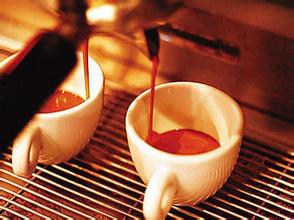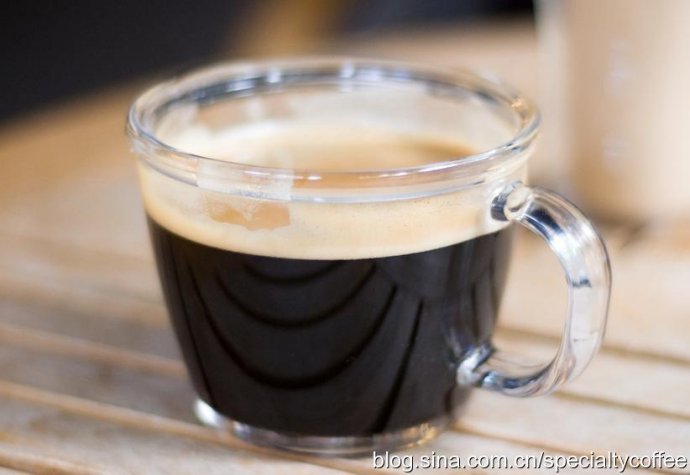Coffee operation technique: explaining the significance of cupping coffee cup test
Guide: the significance of cup testing is considered to be to evaluate and compare several different types of coffee at the same level.

The significance of cup test is to evaluate and compare several different kinds of coffee at the same level. Because the differences between coffees are very subtle, observe the characteristics of these coffees (flavor, mellow, freshness.) It is easily affected by different coffee extraction methods (utensils). Because of the elimination of these variables, carefully prepared cup tests can taste the most basic inherent characteristics of coffee.
Scientific rigor, to a certain extent, guides us to carry out accurate cup testing. The measurement of water and coffee powder must be accurate, in order to prevent taste, the bean grinder must be thoroughly cleaned before grinding different coffee, and the injected hot water must be highly consistent. Time is also a factor; once the coffee powder is soaked, the brewing process begins, and a lot of chemical and flavor changes will take place in the next 20 minutes.
From the beginning to the end, these factors will have a very important impact on the evaluation of coffee. In order to ensure that every cup of coffee on the table is treated the same, cup testers have developed etiquette to make preparations strict, standardized and orderly.
Because of different purposes, we don't need such rigorous etiquette to make cup tests at home. Taking a cup test at home will show you a new world of coffee and tell you what makes coffee so special to us. You will find some flavors and slight differences that are impossible in a cup of joe tea. If you bake your own beans at home, or even buy all kinds of beans, plan to put them together. The cup test allows you to learn to evaluate and classify coffee, making you better at blending.
The cup test is also very social. Although the cup test can make a separate kind of coffee, it is best to take the cup test in groups. You can find out the differences between different coffee samples from the comparison, as well as your views and thoughts on several kinds of coffee. For many cup testers, taking a cup test with others can broaden your horizons and help you catch subtle signs of taste that you may miss-your tester partner points out something you haven't found, and you may find it when you taste it again.
Making a cup test at home does not need to be too rigorous-in fact, it means that you do not need to follow some professional cup test rules and rituals.
If you take a cup test at home, generally speaking, you do it because you love coffee, the adventurous feeling of trying and discovering something new, or just for fun. However, if your goal is to really compare the differences between different coffees, it is recommended that you be prepared to make a great effort in the first place.
In the next part, we will guide you step by step on how to make a cup test. Use these as the basic methods of your cup test, but remember that it is best to apply them flexibly. In the process of flexible application, it is even good to omit something or make some mistakes. You're about to get in touch with a real coffee world that you already like a little bit-evaluating coffee (cup testing) may give you an idea you've never had before.
Source: Internet
Important Notice :
前街咖啡 FrontStreet Coffee has moved to new addredd:
FrontStreet Coffee Address: 315,Donghua East Road,GuangZhou
Tel:020 38364473
- Prev

Coffee knowledge: Al's Rule of Espresso extraction (Ayer's rule: sweet spot formula)
Introduction: Espresso extraction of Als Rule (Ayer's rule: sweet point formula) each increase in the amount of 5cc extraction, the extraction time should be subtracted from 1sec. On the contrary, add 1sec. Al Critzer's understanding of Espresso extraction has become the most common concept of Espresso in Europe and the United States. Based on the result that 30cc/ 30sec got a perfect Espresso.
- Next

Introduction to coffee knowledge: what is Lungo coffee?
Introduction: Lungo coffee refers to a coffee drink made with twice the normal amount of water through an Espresso coffee machine, a Lungo, to the effect that an elongated Espresso. Lungo is Italian, the corresponding English is long, French is caf allong, and Chinese means long. The author transliterates it into porch coffee, taking the shape of a long corridor, or translating it into
Related
- What is the meaning of lactic acid fermentation with coffee bean treatment?
- How to judge the state of foam by sound?
- How does the latte pull out the unicorn pattern? Come to get for a little trick to improve the flower pull!
- Will flower pulling affect the taste of the latte?
- Do you know the history of coffee?
- The difference between honey treatment and sun washing what is raisin honey treatment?
- What kind of milk can a novice use to make coffee foam to keep the foam longer? The correct method and skills of milking tutorial sharing
- Why do washed coffee beans taste sour? Flavor characteristics of washed Coffee
- Introduction to the skill of how to practice the size and height of water injection around the circle of hand-brewed coffee
- How do beginners practice coffee flower drawing from scratch?

